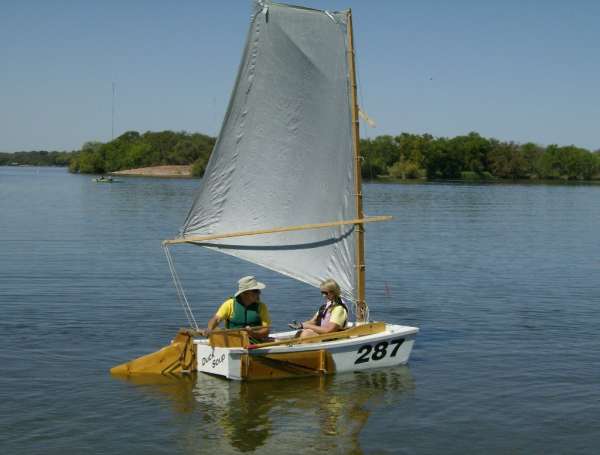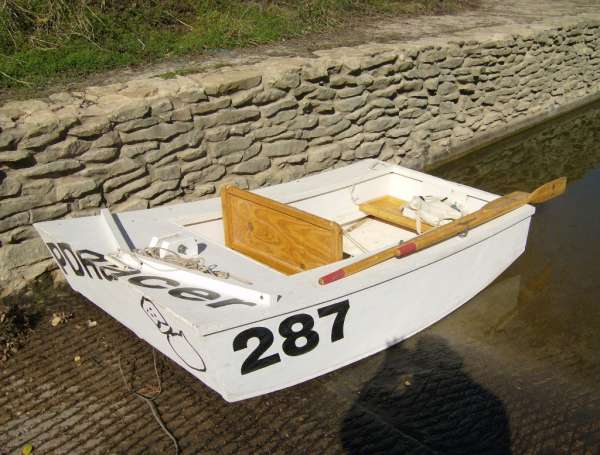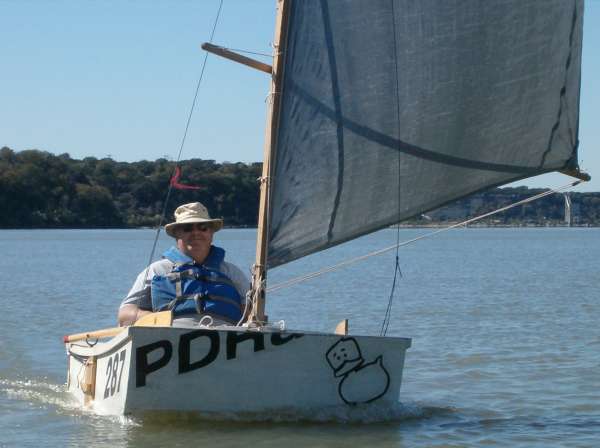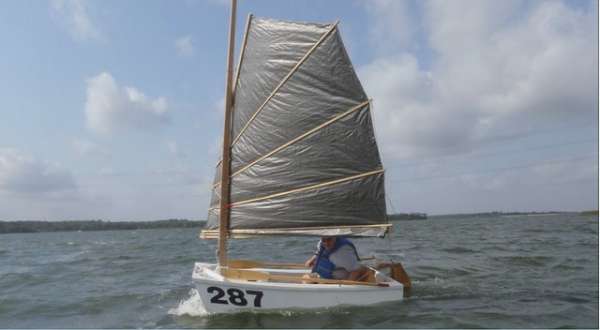You're sailing a #@&% sofa, Dave!
By Dave Sanborn #287 "Duck Soup" (2es 2eo 5ea 2ad 7ar)
Other duckers get the credit for naming my seating arrangement the "sailing sofa", per remark upon meeting and seeing #287 "Duck Soup", at Magnolia Beach Texas in 2009. I knew when I went with a side-airbox hull that I really didn't need to do anything more for seating - the side airboxes make great seats for lots of sailors.
But I wanted a backrest, as I typically sail for hours at a time. I also wanted a seat low enough to let me see under the sail. I came up with the folding, sliding main seat you see in the photos, and another reversible tray / auxiliary seat. The framing for the seats is 2x2. The seating surfaces are two layers of 1/4" plywood, and the seatback is framed of 1x2 with one layer of 1/4" ply. All screwed and glued, with a couple of layers of spar urethane. There are two hinges attaching the back to the seat. I use two ropes with taut-line hitches to adjust the angle of the back. An important feature of the folding seat framing is that the 2x2 for the sides must extend about 6" behind the seatback to keep the whole thing from tipping over backwards when you settle back against the backrest.

The seats slide on 2x2 cleats attached to the boat. The top of the seating surface is about 8" above the lowest point of the hull rocker. Once there's weight on the seats, they don't slide out of position unless I scoot them intentionally.
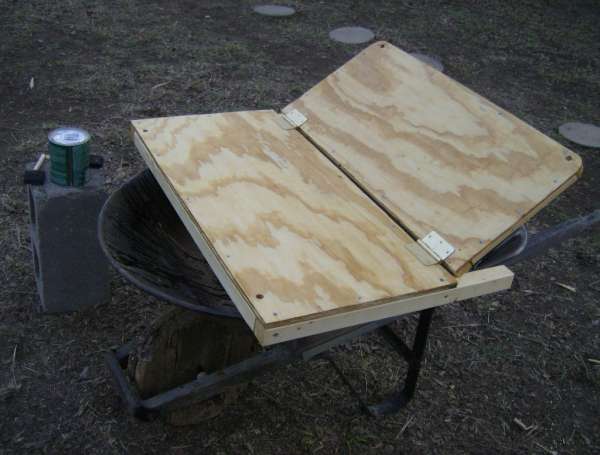
The seats occupy the middle 2'-10 width of the boat, so I needed to make a push-pull tiller. I copied this idea from photos of sailing canoes I found on the internet. The push-pull tiller works great, except that it just doesn't have the feel of a regular straight stick; you just can't tell for sure what the position of the rudder is, except by turning around and looking, or by how the boat is moving. It's easy to turn way too sharp (thus slowing the boat).
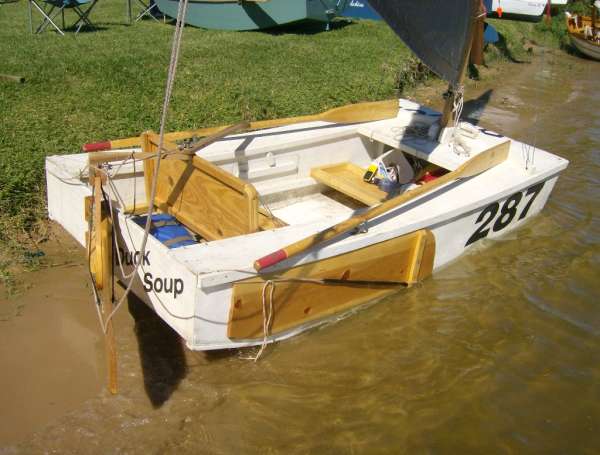
I have been very happy with the seats. I can sail for hours without back-ache, and I can see under the sail. I can slide forward and back as needed to trim the boat (very important to keep from ploughing the lake with the front transom). I can rearrange the seats for rowing, and I found out that the backrest is great for rowing. Luckily, the seatback is low enough that I don't hit my elbows when pulling on the oars.
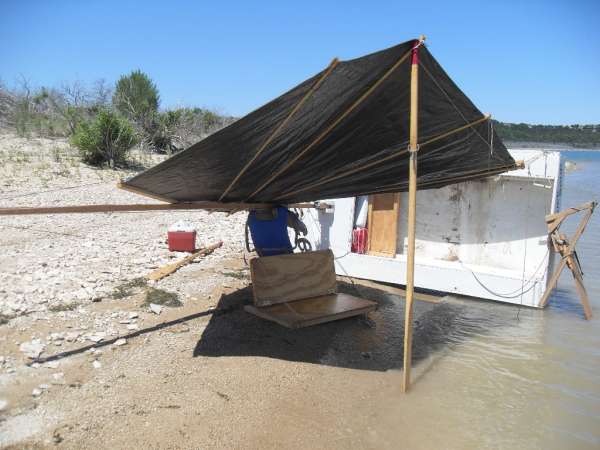
Since the seats are easily removable, I can pull them out and use them on the beach if I need to. The small seat, when flipped over, is an excellent level and dry tray that keeps all my stuff off of the wet, grubby, sloping floor of the boat.
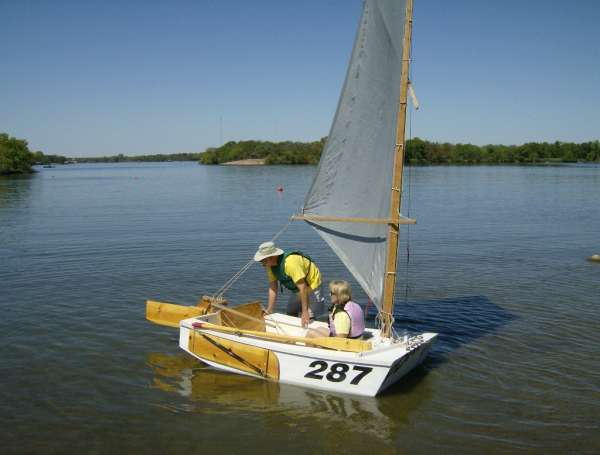
There is room for improvement. These seats are very heavy; using slats and a better grade of wood (allowing more slender framing) would lighten them up. I have found that when the wind is up and the boat wants to heel over, I don't have enough leverage to keep the boat level, no matter how much I scoot over to the windward end of the seat. All-in-all I would say that this seating arrangement is great for lazy, comfortable messing about, but not so great for serious racing.
Sawdust and Spray!
Dave
